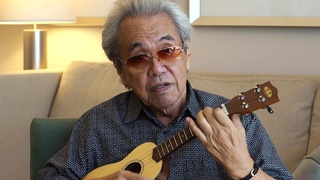Interviews
Soukou Bayashi: Dedicated to the Issei (Japanese)
(Japanese) Well, it’s no big deal. When I started to hit on the taiko even though I am a lousy drummer, the older Issei men and women really loved it and some were even moved to tears. It made me feel so good when I discovered that beating the taiko over here in America could bring so much joy to the Isseis. I gradually began to delve into the Japanese American history and learn about the Issei. I felt I ought to play better for the folks who had come over here in the Meiji era (1868 ~ 1912) and endured hardship. Well, that’s how it started.
So, I composed a dance song in the early 70’s and named it Soukou Bayashi -- Soukou is the other name for San Francisco.1 This music is dedicated to the Issei. Without their hard work, guys like us you know, Fresh off the Boats, would not be able to be here today. Well, that’s what I found out over the years and so Soukou Bayashi is my first song and it is dedicated to the first generation.
Note:
1. Based on the Japanese phonetic reading of kanji that the Chinese have assigned to San Francisco. Hayashi is the percussive element in traditional Japanese music to keep cadence.
Date: January 27, 2005
Location: California, US
Interviewer: Art Hansen, Sojin Kim
Contributed by: Watase Media Arts Center, Japanese American National Museum.



